I noted on Friday how the Albanese government’s unprecedented immigration program, which drove a record 600,000 increase in Australia’s population in 2022-23, has driven up inflation and has forced the Reserve Bank of Australia (RBA) to respond with higher interest rates.
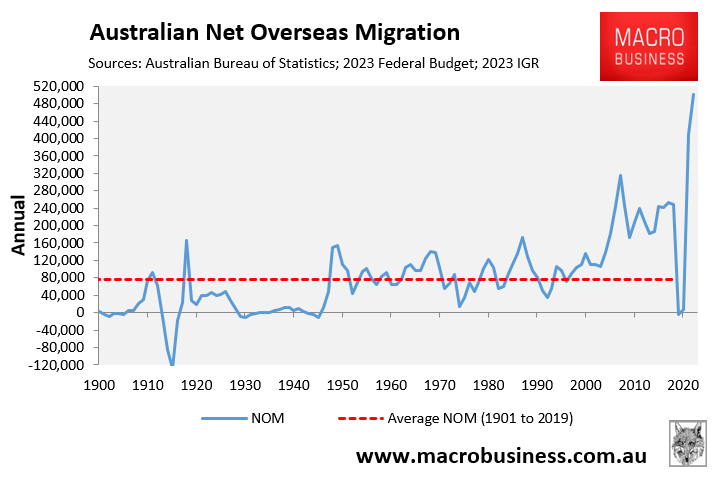
While the RBA is desperately attempting to slow demand and inflation via higher interest rates, its efforts are being thwarted by the sheer number of people being added via the federal government’s mass immigration policy.
In turn, aggregate demand across the economy continues to increase even though individual households are cutting back on their expenditures.
This was highlighted in the September quarter retail sales data published by the ABS.
This showed that retail sales volumes increased by 0.2% over the quarter in aggregate, but fell by around 0.4% per capita when adjusted for population growth (annual chart from Alex Joiner shown below):
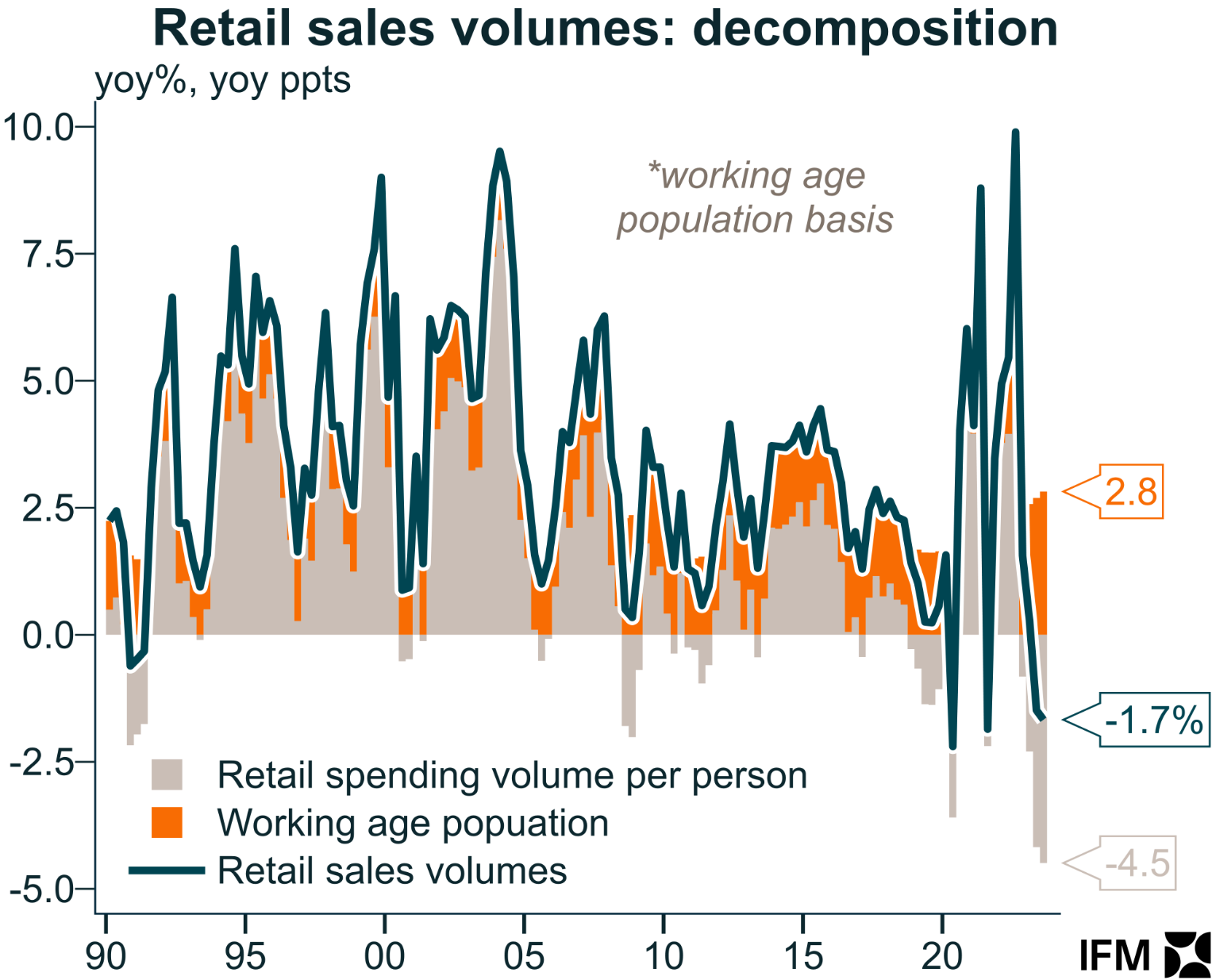
On Friday, the RBA released its Statement of Monetary Policy (SoMP), which included the below chart showing how Australian residents are pulling back on consumption.
However, this drawdown in resident consumption is being more than offset by the huge volume of temporary migrants that have landed in Australia:
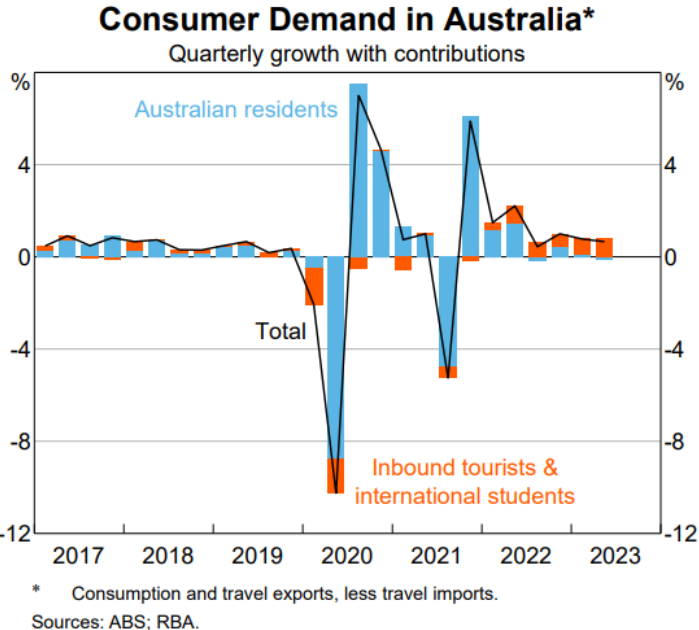
According to the RBA SoMP:
“Total spending has been supported by strong growth in international students and tourists over the past year”.
“Total spending, rather than consumption, determines the demand conditions that feed into the price-setting behaviour of consumer-facing firms”.
The RBA SoMP also notes that “population growth has been stronger than anticipated, driven by a large increase in net overseas migration following the reopening of the border”.
“As a result, the working age population is set to return to its pre-pandemic trend much earlier than previously thought”:
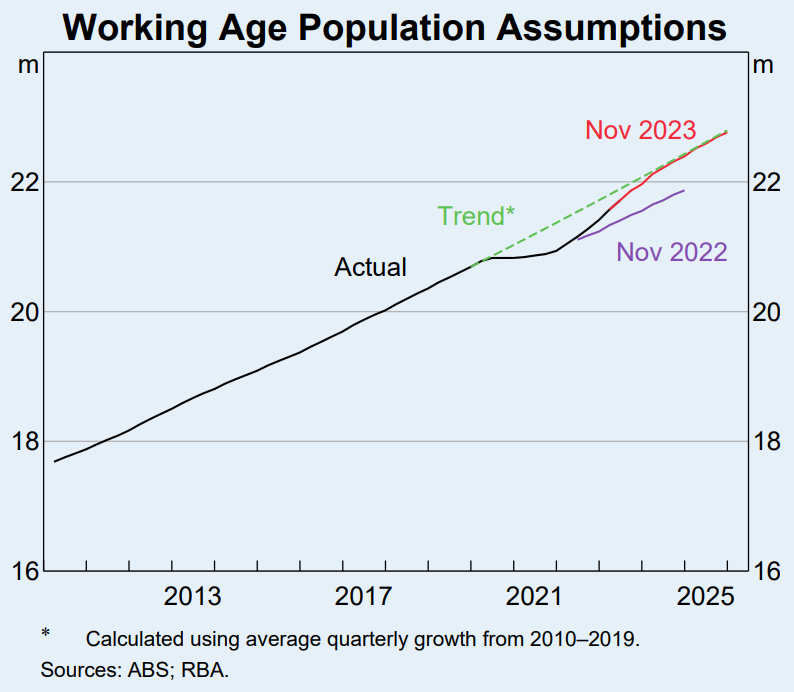
Blind Freddy, but not the RBA is seems, can see that Australia’s working-age population will soon overshoot the pre-pandemic trend.
Nevertheless, the boom in population will continue to grow Australia’s aggregate GDP while per capita growth will continue to fall:
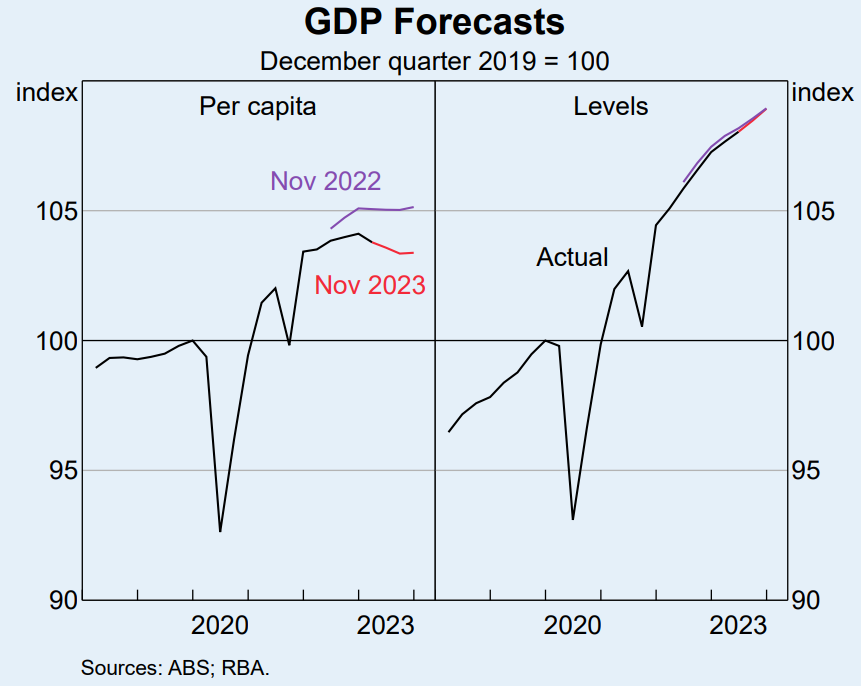
“The increase in population has offset softer-than-expected GDP per capita compared with expectations a year ago”.
“The weaker-than-expected outcomes for GDP per capita are consistent with the poor outcomes for productivity growth over recent years”.
“It also takes time for the capital stock to adjust to an unexpected pick-up in population”.
Meanwhile, the SoMP notes that rapid net overseas migration is driving up rental inflation:
“Excluding the effects of an increase in Commonwealth Rent Assistance in the quarter, rent inflation remained at an annualised rate of around 10%, as was the case in the June quarter”.

“High rent inflation has been broadly based, consistent with tight rental market conditions across the country. Housing supply has not kept pace”.
“Advertised rents have increased 30% since prior to the pandemic, much more than the increase in CPI rents so far”.
“Together with historically low vacancy rates, and little sign that tight rental market conditions will ease in the near term, this is expected to keep rent inflation elevated for some time”.
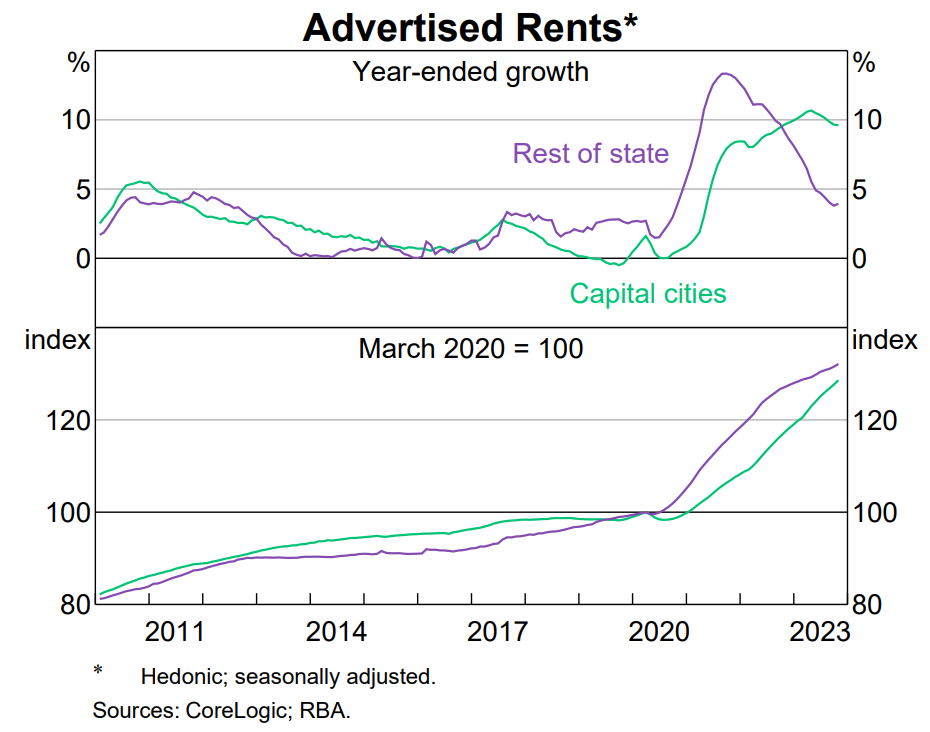
“Stronger-than-expected population growth has added to demand for housing in an already-tight environment of low rental vacancy rates”.
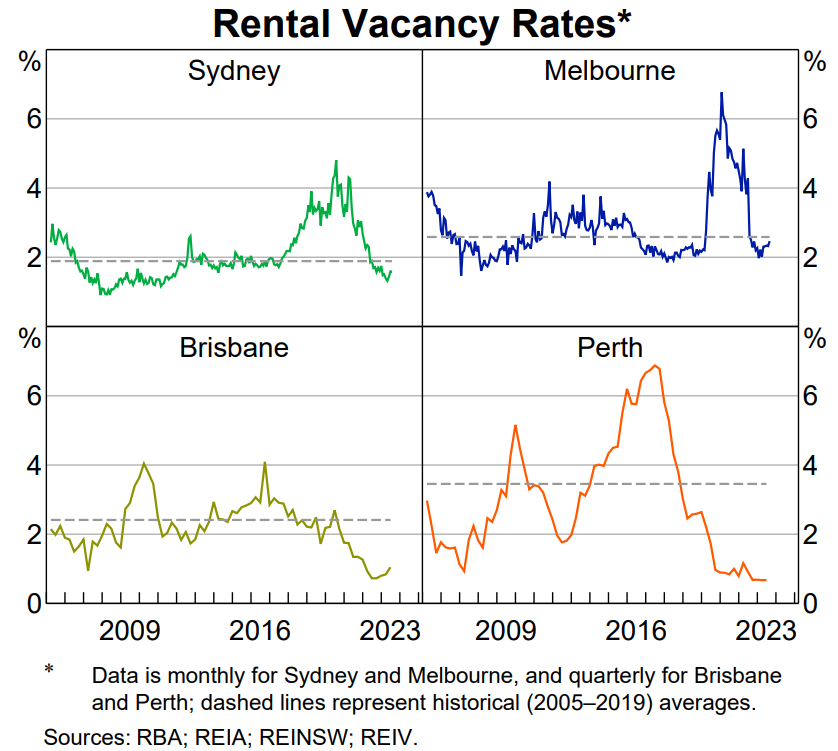
“Tightness in the rental market is in turn supporting demand to purchase established properties and is one factor supporting the earlier-than-expected rebound in housing prices seen over the past year”.
“Rents on new leases flow through to rent inflation in the CPI with a lag because only a small share of the stock of rental properties update leases in a given month”.
In summary, the RBA is engaged in a tug-of-war with the Albanese government’s record immigration program.
The RBA is frantically attempting to slow inflation and the economy through rate increases, while the Albanese government is stimulating both through record volumes of population growth.
As a consequence, the RBA will be compelled to respond with additional rate hikes, or will keep rates higher for longer.
Instead of working at cross-purposes with the RBA and inflicting massive financial pain on the one-third of households with mortgages and the one-third that are renters, the Albanese government should restrict immigration to a level that is below the country’s ability to provide new housing, infrastructure, and business investment.
This would increase productivity, reduce inflation, and improve the lives of both tenants and mortgage holders.

